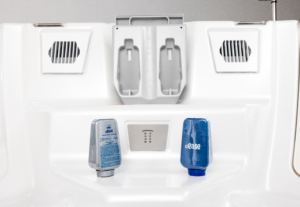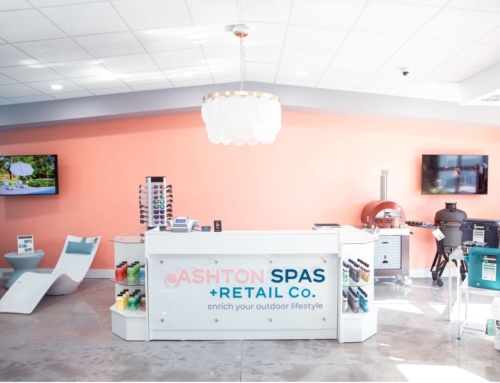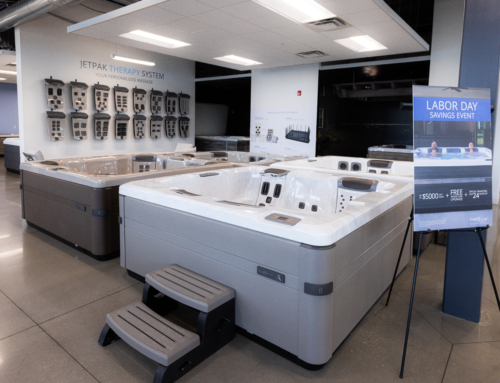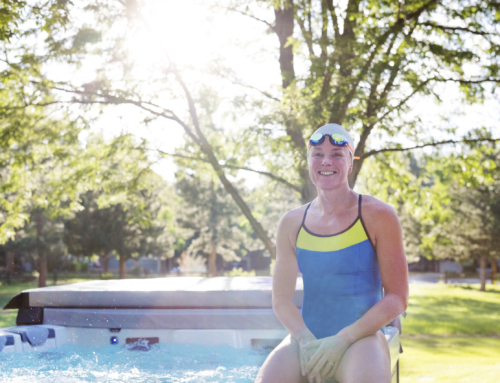If you feel as though you aren’t closing many leads, missing your goals, or losing potential customers halfway through your presentations, it could be a result of how you are handling objections. Often, the key to turning a hesitant prospect into a buyer is addressing their concerns early and effectively. By anticipating objections and handling them confidently during the conversation, you can build trust and keep the customer engaged. Mastering the art of objection-handling is essential for moving the sale forward and closing deals.
In this article, we’ll explore common sales objections, how to uncover what may be holding a customer back, and effective ways to address those objections. Whether you’re new to the industry or have years of experience, these insights can help you refine your approach and close more deals with confidence. By understanding and responding to these challenges, you can boost your closing rate and improve your overall sales performance.
Meet Jim Sueppel
Much of the tips and advice in the following article come from our in-house expert, Jim Sueppel. With over 30 years of experience in the spa industry, Jim has developed a deep understanding of what it takes to succeed in sales. He has worked as a Regional Manager and Sales Manager for several spa brands, and brought his expertise to Bullfrog Spas in 2012, where he now serves as the Vice President of Sales.
Jim’s advice is invaluable, as he has seen firsthand which sales strategies and tactics drive success and which approaches fall short. Over the years, Jim has perfected his methods, adapting to changing market trends and customer behaviors to create proven strategies that help dealers close more sales and grow their businesses.
Common Mistakes
According to Jim, one of the most common mistakes salespeople make is rushing into the sale without first understanding what the customer truly wants. “Too often, sales reps are eager to present their product and push for a sale, but in doing so, they forget to ask basic questions about the customer’s needs, lifestyle, or budget,” says Jim. This not only limits their ability to tailor the presentation to the customer but also makes the customer feel like they’re not being heard.
Additionally, Jim acknowledged that during product presentations he has often seen salespeople overtalk, giving lengthy descriptions or technical details, rather than engaging the customer in a conversation. According to Jim, it’s essential to get the customer to talk, as this opens the door for trust-building and a better understanding of what the customer values most. “Too many people spend 10% of the time overcoming objections and 90% selling and closing. It has to be 50-50, otherwise it feels high pressure for the customer,” says Jim.
Another frequent mistake Jim pointed out is the use of intimidating body language. Simple things like crossing your arms, standing too close, or even holding a long stare can make customers feel uncomfortable or defensive. Be mindful of these subtle cues and ensure your body language is welcoming and approachable.
 “Sometimes your body language can make you seem closed off. It’s wrong to sit across from them staring at them, you’re not their banker, you’re not trying to sell them a car, stand at a 45-degree angle like you would when having a conversation with your friend,” says Jim.
“Sometimes your body language can make you seem closed off. It’s wrong to sit across from them staring at them, you’re not their banker, you’re not trying to sell them a car, stand at a 45-degree angle like you would when having a conversation with your friend,” says Jim.
Jim also advises against degrading the competition, which can easily make a salesperson appear petty or unprofessional. According to Jim, “As I’m selling I only say three things when asked about the competition: I’m sure they are nice people. I’m sure they have a nice product. Let me show you our product. Then throughout my presentation I set land mines. I talk about why wood is a bad frame, why our circulation is more powerful, etc. I never say a competitor’s name… Keep in mind, that by asking them questions at the beginning you know where else they have been shopping and who you are going up against,” says Jim.
Lastly, Jim stated that assuming a customer can’t afford the spa is a critical error. Prejudging someone based on appearance or early conversation can lead to missed opportunities; instead, every customer should be treated as a potential buyer, with the focus on showing value and offering solutions that fit their needs. Read on to discover Jim’s advice about how to handle presenting financial options to the customer.
Basic Sales Strategies
Drawing from his many years of experience, Jim identified the following three tactics as some of the most important for improving sales performance and addressing objections from the start. These strategies are essential for any salesperson looking to elevate their game and close more deals. Take a look below at the fundamental approaches Jim believes will make the biggest impact on your dealership’s sales and revenue growth.

The Art of Profiling: Learn how to observe details such as the type of car a customer drives, their clothing, and other subtle cues to understand their emotional type. These observations can offer insights into the customer’s preferences, but the focus should always be on building trust and serving their needs, regardless of appearances.
According to Jim, “Good salespeople can make their jobs a lot easier if they perfect the art of profiling. When a customer comes in you need to ask a lot of questions to get a conversation going and in that first dialogue, they are going to tell you what kind of profile they are. Are they a CEO mentality, are they a visual, analytical, emotional, etc. They are going to give you a map on how to sell to them just by talking.”
Be a Friend: While it may seem like a basic tactic, acting as a friend rather than a pushy salesperson can be incredibly effective. By genuinely helping customers navigate their options and showing interest in their preferences, you create a sense of trust. This approach helps customers feel more comfortable and often leads to stronger, more positive buying experiences.
Ask Discovery Questions: Inquire about the customer’s time frame, the features they value most in a hot tub, who will be using it, and other preferences. These insights will allow you to present the best product that meets their needs and make the sales conversation more personal and tailored.
Overcoming Common Objections
When considering the purchase of a hot tub, customers often have a variety of objections that can cause hesitation. By understanding these concerns and addressing them effectively, salespeople can guide potential buyers toward making a confident decision. Jim discussed the following as some of the most common objections and strategies for overcoming objections:
Price: Many customers are concerned about the upfront cost of a premium hot tub; however, salespeople can overcome this by discussing financing options, spreading out the cost with manageable payments, and emphasizing the long-term value and benefits (e.g., relaxation, health, and family time) before diving into the price.
According to Jim, “You never want to put someone in a position where they have to say they can’t afford it. You have to sell financing without personally offending your customer. There are ways around this that we teach more thoroughly in our Sales Excellence Training, but you want to turn it around and tell them they are financing because they are a smart investor, not because they can’t afford it. For example, I know you’re a really wise investor so let me tell you what others who are also good with money do. They use someone else’s money.”
Water care: Customers also often worry about the complexity of maintaining clean water. This can be overcome by tailoring your approach to their personality. For analytical customers, explain the specifics of water care systems. For others, use general terms, focusing on simplicity, and always speak as if they already own and enjoy a Bullfrog Spa. Jim advises telling the customer about FROG @ease and how it only works when needed, and the other simple options that complement it, such as Clear Comfort AOP.

Saltwater spa comparisons: Many customers come in the showroom already viewing saltwater spas as a superior option. Jim explained how these predetermined views can be overcome by calmly explaining that saltwater systems require regular part replacements, still produce high amounts of chlorine through electrolysis, and that details such as this are all outlined in salt spa manuals, but often not discovered until after a purchase.
According to Jim, “When people think of saltwater they think of the ocean, they think of an Epsom salt bath and how soft it makes their skin feel. But saltwater spas simply make chlorine by applying electricity to the salt. The hard thing about them that salt is very corrosive, its hard on your pipes, its hard on your jet seals.” Be sure to position Bullfrog Spas as the superior choice by highlighting the minimal plumbing design and simple, low-maintenance water care solutions like Clear Comfort AOP.
Negative online reviews: You may also have customers hesitating to purchase a spa after seeing negative reviews online. Jim recommends overcoming this situation by staying calm, avoiding arguments, and using the Five Whys technique to discover the real source of their concern. Then, address it directly, explaining why a review might be misleading. “Nowadays salespeople are just validators thanks to the internet. But sometimes what you find on the internet is no better than what you would find on a bathroom wall,” says Jim.
Energy usage: Energy costs can also be a worry for potential buyers, but it can be easily overcome by highlighting the energy-efficient features of Bullfrog Spas, like full foam insulation, which help lower operational costs. “A lot of people are just going to say they are better, but they don’t tell you why. At Bullfrog Spas we have the ability to explain why we are better,” says Jim. Be sure to use benefits banners and other showroom POP to give customers a visual of the benefits you are presenting.
Ultimately, by addressing these objections calmly and knowledgeably, you can build trust and guide customers through their concerns, making them feel confident in their purchase.
Bullfrog Spas Tools
Jim also acknowledged that using the right tools can significantly boost a salesperson’s ability to close a sale, here are just a few of the tools Bullfrog Spas dealers have available:
- Showroom POP: Displays that clearly outline the unique benefits of Bullfrog Spas, such as customizable JetPaks and long-lasting Enduraframe.
- Interactive Kiosks: Let customers digitally explore spa models and configurations, making it easier for them to visualize their ideal spa.
- Moveable JetPaks: Allow customers to physically move the JetPaks in the spa to experience customization firsthand.
- Floor Mats with QR Codes: Available on the dealer media library, these mats let customers scan a QR code to see how a Bullfrog Spa would fit in their backyard using augmented reality.
Final Advice from Jim
While everything discussed in this article is important and valuable for all salespeople, Jim emphasized three key points that truly tie it all together:
Attention to Detail: It’s often the small things that leave a lasting impression on customers, such as remembering their preferences, ensuring the showroom is spotless, or going the extra mile to answer every question. According to Jim, being thorough and mindful of these finer points demonstrates professionalism and care, which builds trust and can turn a potential buyer into a loyal customer.
Be Proactive: Success in sales doesn’t come from waiting for customers to walk through the door—it comes from being proactive. Jim advises salespeople to always seek out opportunities, whether that means reaching out to past leads, networking, or finding creative ways to engage potential customers.
Have a Learning Mindset: Jim lives by Nelson Mandela’s saying “I never lose, I either win or learn.” Whether it’s learning new sales techniques, understanding the latest product updates, or adapting to evolving customer behaviors, staying curious and open to growth keeps you sharp and competitive. “Salespeople need to have the same mindset as Mandela,” says Jim, “They need to have the outlook of I their either won, or I learned.” Try reading self-improvement books, engaging in role-playing scenarios, and practicing regularly to stay sharp and refine your skills.
Overall, by understanding customer concerns—whether it’s pricing, water care, or misconceptions about competing products—salespeople can approach each objection with confidence, knowledge, and empathy. By following Jim’s advice and strategies, you’ll be able to close more leads and ultimately meet your sales goals. The key is to remain calm, listen carefully, and address the root cause of the concern while highlighting the value and benefits of the product. With the right tools, preparation, and mindset, overcoming objections becomes less about handling challenges and more about building trust and guiding customers toward making an informed decision they’ll feel great about.








Leave A Comment